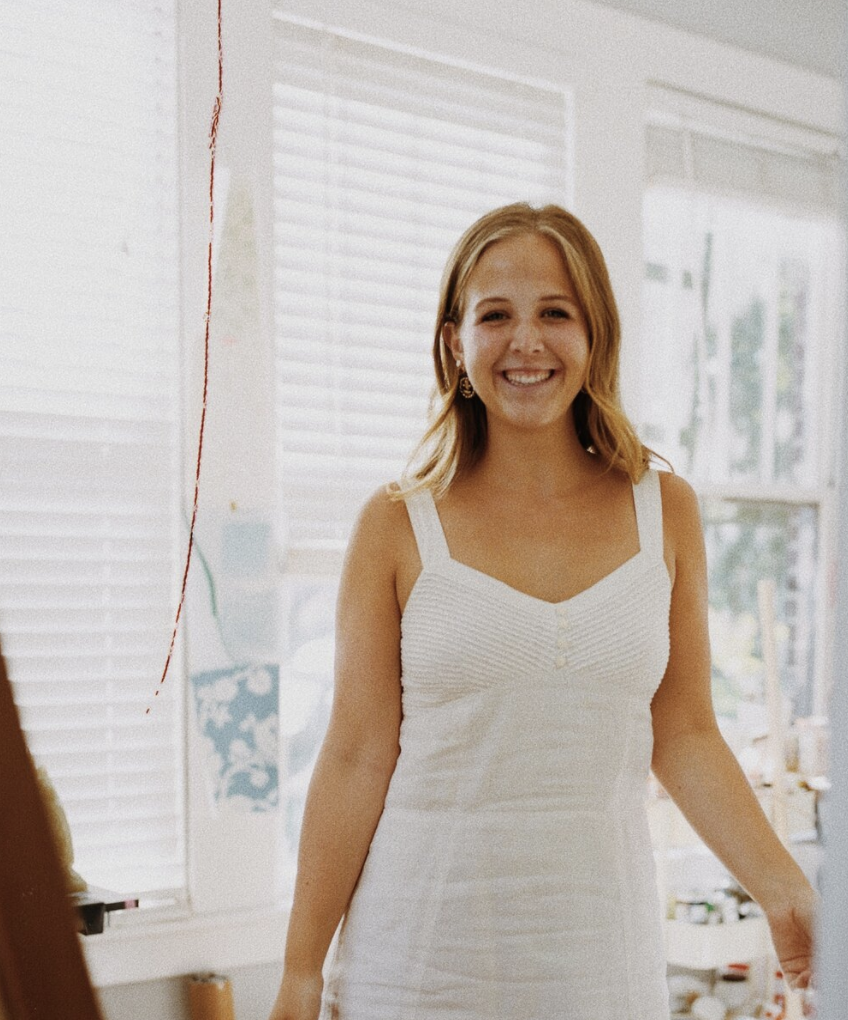Inspiring Women in Art
By Olivia Wolfe
With Women’s History month at its start, it seemed like the opportune time to call to mind all the ways in which women influence and impact the world—how female voices are heard and valued; the women who inspire us in our personal lives and in our careers; the list could go on forever.
After pondering who impacts and inspires me, I found myself steering back to all of the incredible female artists who surround me in my life. With a minor in studio art, I collaborate with many female artists on a daily basis, and even more so now that I have the opportunity to study at the Marchutz School of Fine Arts. Thinking of the talent and passion that each of them possess, I began to wonder what the image of a powerful woman might look like in the art world.
So, I sat at my desk and I wondered: Who do we think of first when we think of inspiring historic artists? Pablo Picasso? Claude Monet? Maybe Leonardo da Vinci?
And I soon realized that the artists I was quickly jotting down were male.
Of course, there are some females included in the popular list of the greats, including Georgia O’Keeffe and Frida Kahlo, who most art enthusiasts consider a house-hold name. However, when I typed “most important painters of all time” into a Google search, the first eleven names listed were male. “Best painters of all time” proves the same sort of result.
It shocked me. I wondered how this could be true, given that there are so many creative women who inspire me daily.
Art has always served as a voice of expression and feeling for those who choose to create—a visionary chance to speak to the world and let other voices be heard. Because of this, the art world has produced a community where ideas can flow freely, and boundaries are broken through innovative ideas.
And it is up to us women and us artists to louden the voice of women in art and continue to water a community where we all can flourish, no matter who or what gender we are.

Recently, I spoke with a friend of mine, Louisa Dunn, who is currently navigating her career as a female artist. Dunn is an artist based in Charleston, South Carolina whose focus is in textiles. We had the chance to chat over email about what her experience as an artist has been, and the things that inspire her to create the work that she does.
At the moment, she is moved by a range of different artists including painter Helen Frankenthaler, sculptor Barbara Hepworth, Jeanne-Claude for his interactive work and Japanese textile designer Reiko Sudo. All of these artists have guided her creative style and genius. But our influences continually change as the times change with us.
Dunn writes of women in the arts as giving her the chance “to be rich in community,” explaining that “women who want to further their own craft and each other’s in a space that feels so safe and secure in foundation that there is room for growth without fear.”
This feeling of safety and security has followed Dunn since her time at the Savannah College of Art and Design, where she earned her undergrad in a major that was composed of “mostly female students with female professors” to her current career “in a studio space of five different female-run art businesses based in Charleston.”
These women, or studio mates, remain her constant inspiration as they “navigate the art and business worlds.”
It is that sense of community that generates the network that artists use to thrive, reminding us that, as Dunn writes, “we must be kind to those who help us and always remain gracious.” Art happens at the intersection between human perception and connectivity with the natural world. Dunn, inspired by this idea, looks at how we influence each other in relation to color and space in the world around us as she dives into each new piece.
Below are examples of Louisa Dunn’s artwork (photos provided by Dunn).
COVID-19 has also impacted the way community and connectivity have been able to thrive within the world of art. As a Bachelor of Fine Arts student in 2020, Louisa felt the hard loss that many students around the world felt in losing precious in-studio time. How we learn from one another in an open creative space changes drastically when refocused to computer screens. It also impacts the gathering aspect of art where we come together to observe, question, and communicate.
Moving into Spring and Women’s History Month, we hope for a breath of fresh air to come and heed the advice Dunn gives for the emerging young female artists of the future:
“Learn, learn, learn as much as you can about what you are interested in! Do not be bashful or feel embarrassed of the things that excite you—if you have not found the people yet that support you in your endeavors, do not lose heart because you WILL find those people as you chase what you love, and it is the best place to be!”
After reading Dunn’s words, I closed my computer feeling inspired and that I had gained a greater understanding of what art can mean for women; that we, too, can fill the lists of Google’s “most important painters of all time.”
And it stems from finding the community in art that will lift each other’s voices up.

